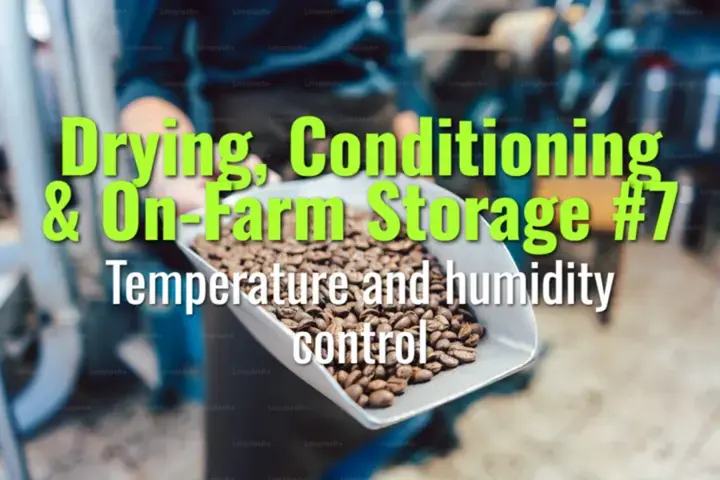Temperature and humidity control
This topic explains how controlling temperature and humidity in coffee storage preserves quality, prevents defects, and ensures stability until export or roasting.
- Coffee Basics Nerds
- 2 min read
Article 7 of 12 in Drying, Conditioning & On-Farm Storage/

Why Temperature & Humidity Matter
- Green and parchment coffee are hygroscopic, meaning they absorb or release moisture depending on surrounding conditions.
- Uncontrolled climate leads to rehydration, mold, or flavor fade.
- Ideal storage = stable environment that protects moisture content (10–12%) and water activity (0.55–0.65).
Target Conditions
- Temperature: 18–22°C (cool and stable).
- Relative Humidity (RH): 55–65%.
- Fluctuations cause condensation, uneven moisture, and quality loss.
Risks of Poor Control
- High humidity (>70%): Mold growth, baggy or musty flavors.
- Low humidity (<50%): Over-drying, brittleness, loss of aromatics.
- High temperature (>25°C): Accelerated aging, grassy or faded cup.
- Temperature swings: Condensation inside bags, leading to localized mold.
Monitoring Tools
- Hygrometers and thermometers: Simple, affordable monitoring.
- Data loggers: Record long-term storage conditions.
- Smart warehouse systems: Automated climate control for large estates.
Best Practices
- Store coffee in ventilated, insulated warehouses.
- Use pallets to elevate bags and prevent ground condensation.
- Avoid storing coffee near walls exposed to external heat or moisture.
- Seal doors and windows to reduce external humidity swings.
- Rotate stock (first in, first out) to maintain freshness.
Market & Quality Benefits
- Stable climate preserves sweetness, acidity, and aroma compounds.
- Prevents losses from mold, pests, and rejections by specialty buyers.
- Extends storage life from 6–9 months to 12+ months under good conditions.
Lasting Importance
Temperature and humidity control are non-negotiable in post-harvest coffee management. By maintaining a stable environment, farmers and cooperatives protect coffee from climate-related defects, ensuring that carefully produced lots retain flavor integrity and market value until export or roasting.
You might also like:
- Tags:
- Lasting Importance
- Best Practices
- Specialty Buyers
- Moisture Content
- Water Activity
- Sweetness Acidity
- Flavor Integrity
- Post Harvest
- Market Value
- Storage Conditions
- Rotate Stock
- Risks Poor
- High Humidity
- Mold Growth
- Temperature Humidity
- Monitoring Tools
- Parchment Coffee
- Term Storage
- Quality Loss
- Relative Humidity
- Non Negotiable
- Uneven Moisture
- Market Quality
- Large Estates
- Quality Benefits
- Coffee Hygroscopic
- Climate Control
- Cool Stable
- Temperature Cool